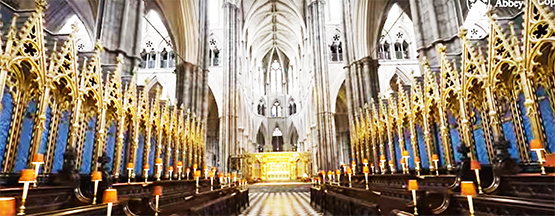Sanctuary of Westminster-Abbey-Church,
the Collegiate Church of Saint Peter at Westminster
Cosmati pavement

King Henry III was clearly setting his vision of his 56 year reign in stone, beginning right after his official coronation in W-Abbey on 17/5/1220. In that year, he laid the foundation stone of the old Lady Chapel. He had a special devotion to St Edward the Confessor. He wanted to emulate the great gothic churches then being built in France and to transfer Edward's body to a new shrine near which he himself could be buried.
As the pious founder of Westminster Abbey's Gothic Church, he was creating not just the city of God in geometry and stones, but out of that he was showing how his sanctified reign was part of an ordered universe. To challenge his kingship was to question the great chain of being. This abbey was of this world but also a conduit to something beyond. Like Plato’s shadow, the cosmati stones/crystals in this church left flickering outlines to the perfection of God’s creation as well as to knowledge beyond the contemplation of scholars.
The cosmatesque mosaic pavement is 7.5 m. square, and included over 30,000 pieces of stone and crystal. The Italian Cosmati ‘merchants and workmen brought with them stones of porphyry, jasper, and Thasos marble. These petrologically identified stones were remnants of ancient civilizations, and contain mystical properties, such as very detailed information about and specific energies of the places they came from.
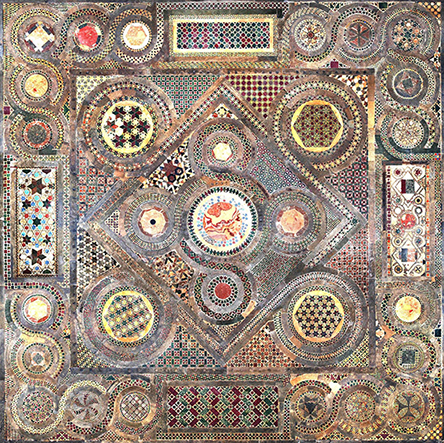
The purple porphyry had been mined in the remote deserts of Egypt during the age of the pharaohs and used in ancient temples. The green stone came from the mines of long-lost Sparta, but were raided from ruins by the masons for their intricate designs. There was yellow marble from Tunisia, pink beccia giallo, black Egyptian Gabbro, rare alabaster, native Purbeck limestone. There was opaque glass, handmade in cobalt-blue, red, turquoise and white, as well as transparent crystals in similar colors. At the center of the design is a huge disk, 68 cm wide, of veined alabaster.
The laying of the stones/crystals is a labyrinth of shapes and significance. The stones came from the ruins of the Roman Empire but were brought to order within London’s royal abbey. The patterns incorporated motifs gathered from Christian, Byzantine, and even Islamic designs, and all completely distinct. Of the 60 roundel bands that wrap around the shapes within the design, 49 are unique.
The pavement has a square border that encases an inner square at 45°, forming a cross, enveloping a quincunx, wrapped together with roundels, which holds the central alabaster orb. Within this border there are 8 panels. The 4 corners contain intricate patterns of 5 hexagons.

Each pattern is itself a maze of meaning: rational geometry, conforming to the defined cosmic laws of Nature, intertwined with theology and pagan philosophy in order to find a new representation of the God, Man, Time and the Universe.
Each shape has its own meaning: the perfection of the orb signifying eternity, as well as the earth. The square reminds us of the four fold symmetry of the elements, the seasons, points of the compass, the humors of the body. The Quincunx forms a cross within the square, centered by a circle. It offers a simulacrum of the cosmos.
The powerful iconography of 3 reminds us of the trinity, the beginning, middle and end, the passage of the soul through time, as, three times three, the nine spheres of the firmament rotate to make heavenly music.
The stones also represent Plato’s shadows on the cave wall, a reordering of Nature that can only gesture through their imperfection the wondrous beauty of God’s perfect plan.
But in this very human effort, the stones and crystals offer a portal into another world, reconciling the chaos of everyday life with the rational and geometric order of God’s creation.
Around the outer border, the dedication was set:
“Four years before this year of our Lord 1272, King Henry III, the court of Rome, Odoricus and the Abbot set in place these Porphyry stones.”
The stones then offer a riddle – nothing less than the nature of the Prime mover, and the date of the end of the world:
"If the Reader wittingly reflects upon all that is laid down
He will discover here the measure of the prime mobile:
the hedge stands for three years,
add in turn dogs, and horses and men,
stags and ravens, eagles, huge sea monsters, the world:
each that follows triples the years of the one before.
The riddle predicts the end of the world, as at least 19,000 years away.
Encircling the central stone of the work, reflecting a 'spherical globe', is as if looking out the sun-filled mouth of Plato’s cave, God’s vision is transcribed:
Here is the perfected rounded sphere which reveals the eternal pattern of the Universe.
This way of coronation of English kings is an attempt to reign in alignment with the catholic church till 1534, after that the Christian Church of England (founded by King Henri VIII) with the King/Queen as the supreme governor, Jesus and friends, so as to receive the "Mandate of Heaven" for their reign:
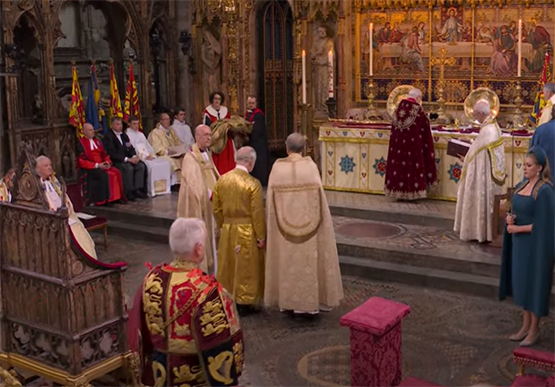
Coronation - initiation chair, made in 1299 for
Edward I, son of King Henry III,
containing the "Stone of Scone"
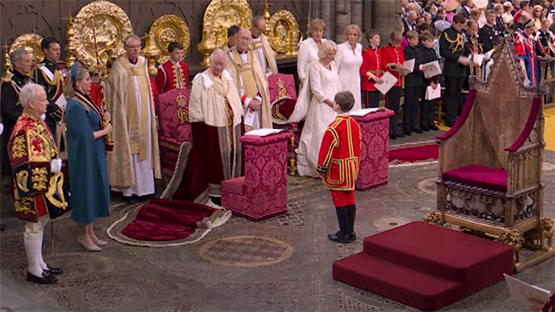
The 'spherical globe' under the royal chair is "the round stone, containing the colors of the 4 elements, fire, air, water, earth". This mosaic pavement thus reflects the universe, and its end.
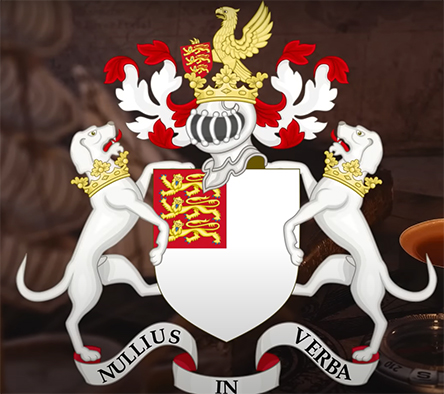
Although King Henri III was buried in W-Abbey, at his wish his heart was delivered to the Abbess at Fontevraud in France, the country of his ancestors, like his grandfather Henri II, and his father John, who was crowned King of England on 27/5/1199 and died on 19/10/1216, etc.
Henri III's son, Edward I was the first to be crowned king on this extraordinary mosaic pavement on August 19, 1274.

